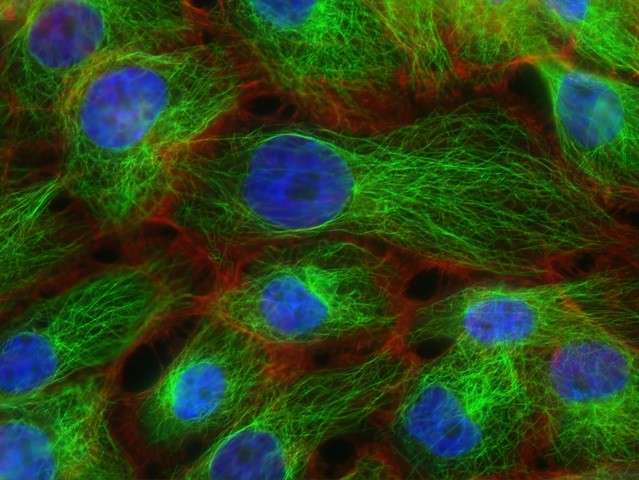Two new technologies that could change cancer treatment
Curing cancer is certainly one of the big challenges of the 21st century. Caused by genetic mutations that transform healthy cells into tumour cells, it is the EU’s second biggest killer after heart disease. In 2020, 2.7 million people in the European Union were diagnosed with cancer, and another 1.3 lost their lives to it, including over 2,000 at a young age. Left unchecked, cancer cases could increase by 24% by 2035, making it the leading cause of death in the EU. Two pioneering projects – Mechano-Control and Edit, financed by the European Commission’s FET programme that focus on cancers of the breast and bladder respectively, could provide the necessary tools to better spot and treat them in a non-invasive way. The Mechano-Control project is composed by a multi-disciplinary team of researchers led by the Institute for Bioengineering of Catalonia. Launched in 2017, its aim was to better understand how mechanical forces that drive fundamental biological processes such as embryonic development, tumour growth and wound healing could open new avenues in cancer research. The team focused on a “solid cancer”, whereby hard tissue nodules are found in the breast and, if left untreated, can grow into a tumour and spread to the rest of the body. Hence, because the hardening of the tissues is not only a diagnosis factor but can also promote the progress of the tumour, the project studies the role of the mechanical forces at play in cells at different scales, from the behaviour at a single molecule to single cell, to the whole tissue. In observing the forces within the extracellular matrix (ECM) – a network consisting of extracellular macromolecules and minerals that provide structural and biochemical support to surrounding cells – and how its composition can jointly influence cell behaviour, the team is looking to develop mimics of this matrix, where they can dynamically change their properties. They can make the matrix get stiffer or softer by applying different kinds of light. The idea is that cells change their behaviour when they are in a stiff place; they further stiffen the tissue by secreting more matrix. If you convince the cells that they are not in a stiff place, then they will stop secreting this matrix, thus helping restore the normal consistency of the tissue. Similarly, the Edit project, launched in 2018 by the Ospedale San Raffaele in Italy, in collaboration with seven other European and Israeli partners, employs a biomechanical approach to the study of cancer. However, it focuses on the extracellular matrix (ECM) of the bladder as a unique biomarker of the early onset of cancer. Current imaging techniques used to detect tumours such as bioluminescence and magnetic resonance are not sensitive enough to be able to recognise tumour cells at very low numbers. This is why the project’s technology uses gold nanorods (GNRs) as intravesical photoacoustic antennas targeted at the extracellular matrix, which allows the generation of an ad hoc visualisation platform. The platform allows for non-invasive 3D visualisation of neoplastic modifications, which lead to tumours, up to 30 µm lateral resolution. Not only that, but the employed gold nanorods can be utilised as heat-releasing effectors at nanoscale for targeted cancer photo-thermal therapy. In other words, the technology is designed to detect highly localised pre-cancerous areas and eradicate them through heat with high sensitivity and specificity. Read the full article on: http://www.fetfx.eu/story/two-new-technologies-change-cancer-treatment/
Keywords
cancer, heart, death, biological process, tumour, diagnosis, cells, platform, biomaterials



